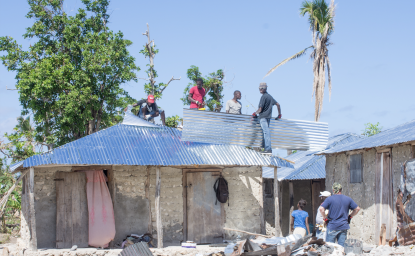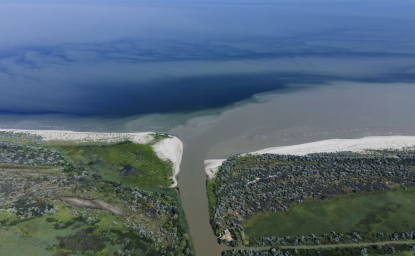UNEP's Klaus Toepfer Launches <i>Understanding Environment, Conflict, and Cooperation</i>
Report Finds Fertile Ground for Peace in Environmental Cooperation,but Lack of Data Prevents Early Warning of Environmental Conflict
Report Finds Fertile Ground for Peace in Environmental Cooperation,but Lack of Data Prevents Early Warning of Environmental Conflict
This report can be downloaded from the UNEP web site and the ECSP web site.
Environmental problems—like climate change, water scarcity, and population growth—are some of the most powerful and least understood challenges we face. What do we need to know to prevent environmental conflict? And how can we use the environment to build peace instead of war?
"Environmental security is a disarmament policy," said United Nations Environment Programme (UNEP) Executive Director Klaus Toepfer, who launched UNEP's latest report Understanding Environment, Conflict, and Cooperation on October 6, 2004 at the Woodrow Wilson Center. To read a summary of the event, click here.
Understanding Environment, Conflict, and Cooperation analyzes the relationship between environmental degradation and political instability, and identifies what we do not understand about it. If researchers could paint a clearer picture of the environment's role in conflict, institutions could more effectively predict violence and environmental disasters, and potentially use the environment to build peace between warring parties.
"Sustainable development is a security imperative. Improving degraded environments and achieving sustainable development enhances human security, prevents conflict, and builds peace," said Toepfer. This report kicks off UNEP's new Initiative on Environment and Conflict Prevention in response to UN Secretary-General Kofi Annan's challenge: "In addressing the root causes of armed conflict, the United Nations system will need to devote greater attention to the potential threats posed by environmental problems."
Leading international scholars identify the pieces missing from the environment-conflict puzzle and examine the gaps in research, institutional responses, and early warning systems. According to Steve Lonergan, director of UNEP's Division of Early Warning and Assessment, "Scholars and practitioners need empirical data, multi-level analysis, interdisciplinary cooperation, and integrated assessments in order to unsnarl this tangled web."
But researchers are in a race against time. As Marc Levy of Columbia University notes, "We've missed more environmental crises than we've anticipated. To build peace around these issues, we must monitor and assess environmental data in a timely manner."
Policymakers, too, must act fast to avoid missing opportunities to build peace. Urges Geoffrey Dabelko, director of the Woodrow Wilson Center's Environmental Change and Security Project, "Policymakers must stop merely reacting to the symptoms of environmental conflict and instead proactively extinguish hotspots by bolstering confidence and building cooperation."
Brief case studies from around the world—including the proposed K-2 Peace Park between India and Pakistan, Central America's Lempa River Basin, and the Horn of Africa—illustrate a range of environment-conflict conundrums. The report can be downloaded from the UNEP web site and the ECSP web site.
Understanding Environment, Conflict, and Cooperation emerged from a collaboration between UNEP's Division of Early Warning and Assessment and the Woodrow Wilson Center's Environmental Change and Security Project (ECSP).
WEBCAST LIVE at www.wilsoncenter.org

The Environmental Change and Security Program (ECSP) explores the connections between environmental change, health, and population dynamics and their links to conflict, human insecurity, and foreign policy. Read more



